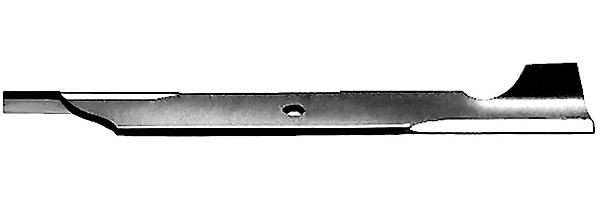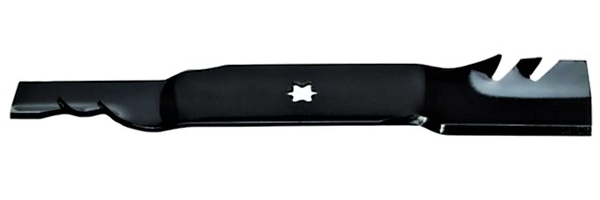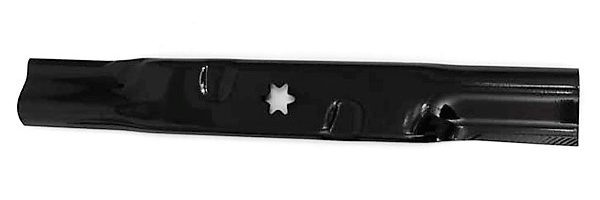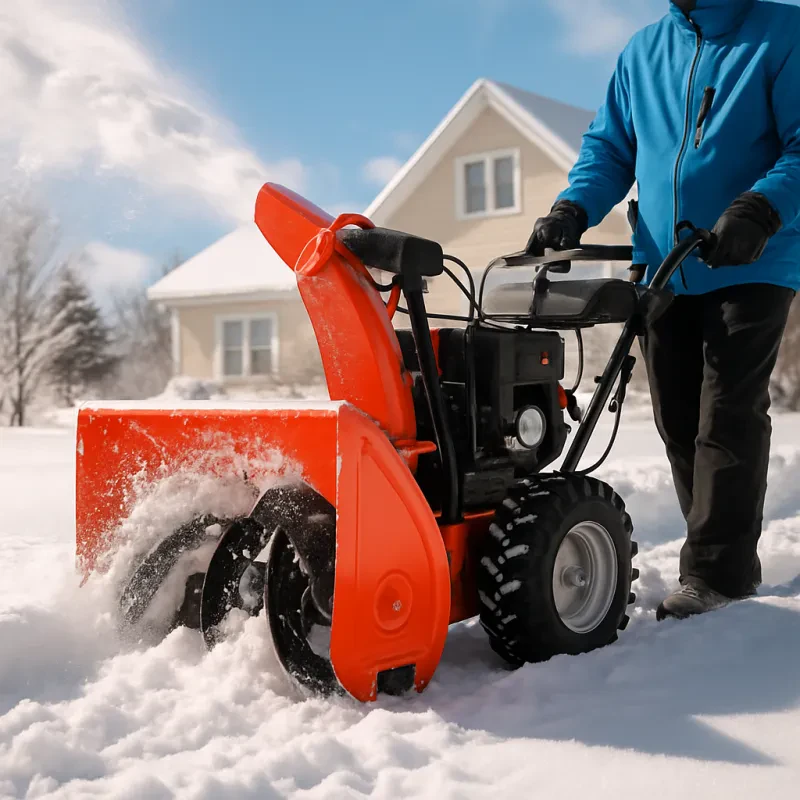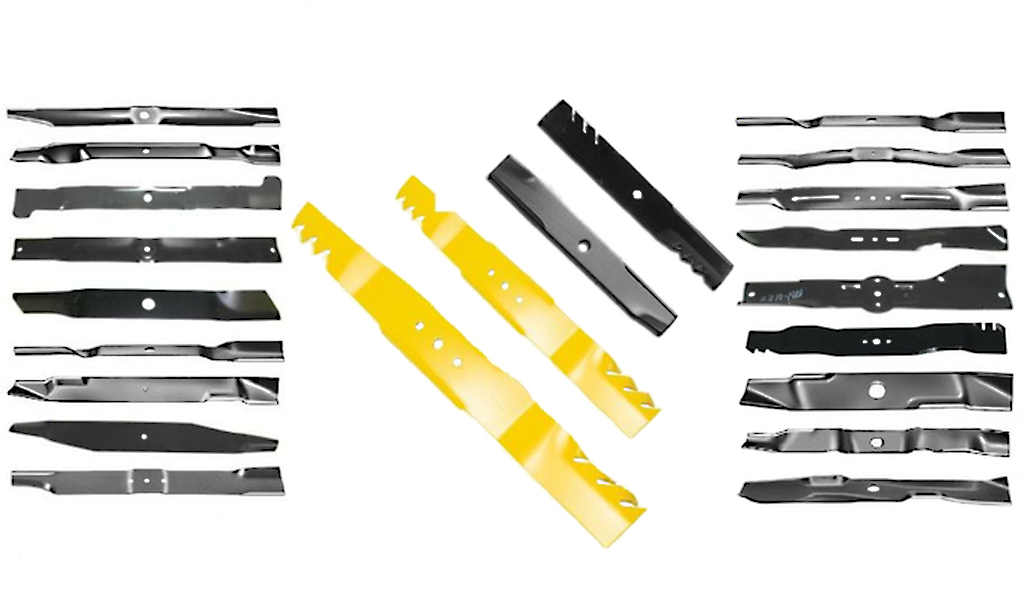 Understanding the Differences: A Guide to the Major Types of Lawn Mower Blades
Understanding the Differences: A Guide to the Major Types of Lawn Mower Blades
When it comes to keeping your lawn looking healthy and beautiful, nothing beats a high-quality lawn mower. And while many people might assume that all blades are the same, the truth is that there are several different types of blades to choose from. So, whether you are a seasoned pro or a new homeowner looking to invest in your first mower, it's important to understand the differences in the major types of lawn mower blades available. Here are some of the most common types:
- Straight blades: These blades are simple and straightforward. They are designed to cut grass cleanly and evenly, and are a good choice for most residential lawns. Straight blades are usually the most affordable option, and they are easy to sharpen and maintain.
- Mulching blades: Mulching blades are specially designed to chop grass into fine pieces and then return those clippings to your lawn. This is a great option if you want to keep your grass healthy and green, as the clippings provide a natural source of nitrogen and other nutrients. Mulching blades also help to prevent thatch buildup and reduce the amount of time you need to spend bagging and disposing of grass clippings.
- Curved blades: Curved blades are designed to create a vacuum effect that sucks grass upright, allowing for a cleaner cut. They are a good choice for lawns with thicker or taller grass, as they can help prevent clogs and other problems that can occur with straight blades. However, curved blades can be more difficult to sharpen and maintain, and they are often more expensive than straight blades.
- High-lift blades: High-lift blades are designed to create more airflow around the mower deck, allowing for better bagging and collection of grass clippings. They are a good choice if you have a lot of leaves or other debris on your lawn, as they can help pick up these materials more efficiently. However, high-lift blades can also be more expensive and difficult to maintain than other types of blades.
- Gator blades: Gator blades are a type of mulching blade that features a serrated edge. This edge helps to chop grass into very small pieces, making them a great choice for mulching and composting. Some gator blades are also designed to bag or discharge grass clippings more efficiently, making them a versatile option for many different types of lawns.
As you can see, there are many different types of lawn mower blades to choose from. By understanding the differences between each style, you can choose the blade that's best for your lawn and your specific needs. So, whether you're looking for a blade that will help keep your grass healthy and green, or one that will make bagging and collection easier, there's a lawn mower blade out there that's perfect for you.
Blade Breakdown: Examining the Pros and Cons of Popular Lawn Mower Blade Styles
When it comes to lawn mower blades, there are a variety of styles to choose from. Each blade type has its own set of pros and cons, and understanding these can help you choose the right blade for your needs. Here, we’ll examine some of the popular lawn mower blade styles and what makes them unique.
1. Standard (Deck) Blades
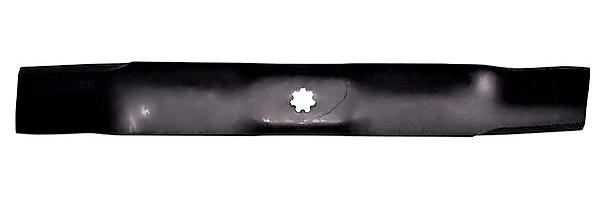 Standard blades are designed to provide general-purpose cutting. These blades typically have a straight cutting edge and rely on speed to get the job done quickly. The pros of standard blades are that they’re versatile, easy to sharpen, and affordable. The downside is that they can create a lot of grass clippings and may not provide the best cut quality.
Standard blades are designed to provide general-purpose cutting. These blades typically have a straight cutting edge and rely on speed to get the job done quickly. The pros of standard blades are that they’re versatile, easy to sharpen, and affordable. The downside is that they can create a lot of grass clippings and may not provide the best cut quality.
2. Mulch Blades
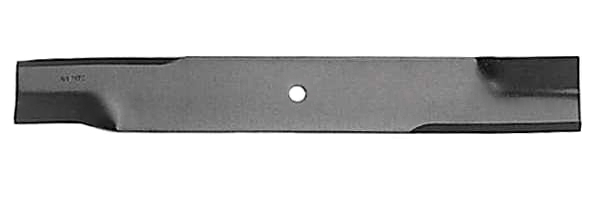 Mulch blades are designed to cut grass into smaller pieces, which then fall back onto the lawn to feed it. These blades typically have curved cutting edges and extra cutting surfaces. The pros of mulch blades are that they provide a natural source of nutrients for your lawn, reduce the need for bagging, and can improve the overall look of your lawn. The downside is that they may not work well on taller grass and may require more frequent sharpening.
Mulch blades are designed to cut grass into smaller pieces, which then fall back onto the lawn to feed it. These blades typically have curved cutting edges and extra cutting surfaces. The pros of mulch blades are that they provide a natural source of nutrients for your lawn, reduce the need for bagging, and can improve the overall look of your lawn. The downside is that they may not work well on taller grass and may require more frequent sharpening.
3. High-Lift Blades
High-lift blades are designed for bagging or side discharging grass clippings. These blades typically have a high angle of lift, which generates a strong airflow to move clippings through the discharge chute. The pros of high-lift blades are that they can handle thick grass and provide good bagging performance. The downside is that they may not provide the best cut quality and can be prone to dulling quickly.
4. Gator Blades
Gator blades are a type of mulching blade that features serrated teeth to chop up grass clippings even more finely. These blades work by lifting the grass and then cutting it multiple times before dropping it back onto the lawn. The pros of gator blades are that they provide excellent mulching performance and reduce the need for bagging. The downside is that they may be more expensive than other blade types and can be more difficult to sharpen.
5. Low-Lift Blades
Low lift blades are designed to create less airflow and suction under the mower deck, which makes them suitable for dry and sandy conditions. Low lift blades also consume less power and fuel than high lift blades, which can save money and reduce emissions. However, low lift blades do not cut grass as cleanly or evenly as high lift blades, which can affect the appearance and health of the lawn. They also do not mulch or bag grass clippings as well as high lift blades, which can create more work and waste. Therefore, low lift blades are best for mowing lawns that are not too thick or tall, and that do not require a lot of mulching or bagging.
Choosing the right lawn mower blade can make a big difference in the appearance and health of your lawn. Consider the pros and cons of each blade type before making your final decision.
How to Measure a Mower Blade
Measuring your lawn mower blade is essential to ensure proper replacement. Let's break it down step by step:
1. Turn Off the Engine and Disconnect Spark Plug Wire:
- Safety first! Make sure the engine is off and disconnect the spark plug wires to prevent accidental starts.
2. Remove the Current Blade from the Mowing Deck:
- Use a flathead screwdriver or wrench/screwdriver to remove the existing blade.
- Take note of the blade's orientation for reinstallation.
3. Clean the Blade:
- Remove any grass clippings, debris, or rust from the blade surface.

4. Measure the Length of the Lawn Mower Blade:
- Measure from the “cutting tip to cutting tip”, diagonally across the blade.
- For the most accurate measurement, measure across the "back of the blade".
- Record the length in inches or centimeters.
5. Measure the Width of Your Lawn Mower Blade:
- The width should be measured at the widest and flattest part of the blade, typically near the center hole.
- Measure normally from side to side..
Remember to wear protective gear when handling blades, and regularly sharpen them for optimal cutting performance. After measuring, choose quality replacement blades known for durability. Happy mowing!
From Mulching to Bagging: How Different Lawn Mower Blade Designs Impact Your Lawn Care Routine
Lawn mower blade design is a critical factor in determining the quality of your lawn care efforts. Depending on the blade design you choose, you can either make your routine a breeze or a rout.
Mulching Blades
Mulching blades are designed for cutting grass clippings into small bits, allowing them to easily break down and provide vital nutrients to your lawn. Besides this, they are less likely to leave unsightly grass clumps on your lawn, thus keeping your lawn healthier and more attractive. However, if you’re in a dry region, avoid using mulching blades since the small clippings can lead to quick dehydration of your lawn.
Deck Blades
If you want a clean and clutter-free yard, deck blades are your ultimate option. They make it convenient for you to collect grass clippings and other debris as you mow, so you can dispose of them hassle-free. Please note that deck blades have to be in a certain length, or else it will not work.
High-Lift Blades
If you live in a wet region, high-lift blades are the way to go. They are known for their long blades and greater lifting capacity, which makes mowing grass in soggy conditions easier. The blades can also discharge grass clippings at greater distances, which means you can cover more ground in less time. Remember to avoid mowing dry lawns with a high-lift blade to prevent a messy look.
Low-Lift Blades
If you’re looking for an affordable option for your lawn, low-lift blades should be at the top of your list. They are the most common blade type, and they work well for most lawns. However, they do require regular trimming after a mowing session since they don’t leave a clean cut.
Gator Blades
Gator blades are the ultimate blend of mulching and bagging blades. They are excellent for cutting grass into fine pieces that can be used as a mulch or left to naturally fertilize the lawn. Gator blades are also perfect for bagging as they cut grass in a way that makes it easy to keep your yard neat and tidy.


